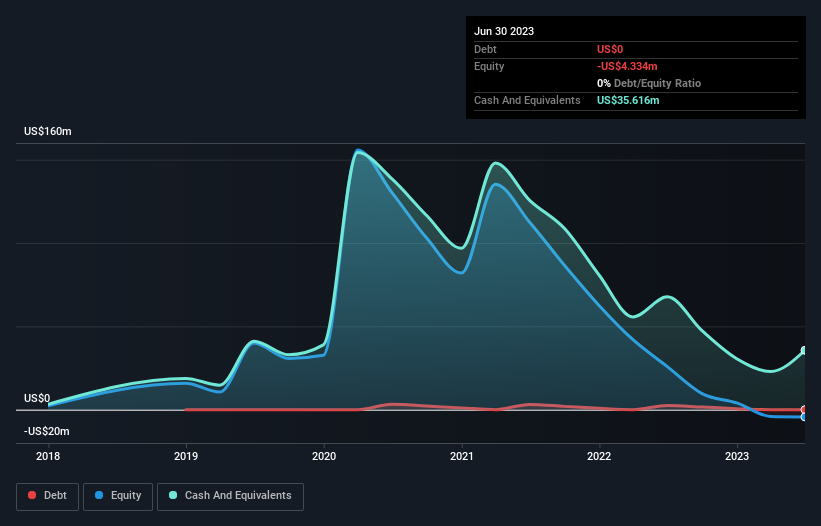We're A Little Worried About Applied Therapeutics' (NASDAQ:APLT) Cash Burn Rate
Just because a business does not make any money, does not mean that the stock will go down. For example, biotech and mining exploration companies often lose money for years before finding success with a new treatment or mineral discovery. But while the successes are well known, investors should not ignore the very many unprofitable companies that simply burn through all their cash and collapse.
So should Applied Therapeutics (NASDAQ:APLT) shareholders be worried about its cash burn? For the purpose of this article, we'll define cash burn as the amount of cash the company is spending each year to fund its growth (also called its negative free cash flow). The first step is to compare its cash burn with its cash reserves, to give us its 'cash runway'.
Check out our latest analysis for Applied Therapeutics
When Might Applied Therapeutics Run Out Of Money?
A company's cash runway is calculated by dividing its cash hoard by its cash burn. In June 2023, Applied Therapeutics had US$36m in cash, and was debt-free. Importantly, its cash burn was US$59m over the trailing twelve months. Therefore, from June 2023 it had roughly 7 months of cash runway. To be frank, this kind of short runway puts us on edge, as it indicates the company must reduce its cash burn significantly, or else raise cash imminently. You can see how its cash balance has changed over time in the image below.
How Is Applied Therapeutics' Cash Burn Changing Over Time?
In our view, Applied Therapeutics doesn't yet produce significant amounts of operating revenue, since it reported just US$11m in the last twelve months. Therefore, for the purposes of this analysis we'll focus on how the cash burn is tracking. As it happens, the company's cash burn reduced by 31% over the last year, which suggests that management are mindful of the possibility of running out of cash. While the past is always worth studying, it is the future that matters most of all. For that reason, it makes a lot of sense to take a look at our analyst forecasts for the company.
How Hard Would It Be For Applied Therapeutics To Raise More Cash For Growth?
Even though it has reduced its cash burn recently, shareholders should still consider how easy it would be for Applied Therapeutics to raise more cash in the future. Companies can raise capital through either debt or equity. One of the main advantages held by publicly listed companies is that they can sell shares to investors to raise cash and fund growth. We can compare a company's cash burn to its market capitalisation to get a sense for how many new shares a company would have to issue to fund one year's operations.
Applied Therapeutics has a market capitalisation of US$91m and burnt through US$59m last year, which is 65% of the company's market value. Given how large that cash burn is, relative to the market value of the entire company, we'd consider it to be a high risk stock, with the real possibility of extreme dilution.
So, Should We Worry About Applied Therapeutics' Cash Burn?
On this analysis of Applied Therapeutics' cash burn, we think its cash burn reduction was reassuring, while its cash burn relative to its market cap has us a bit worried. After considering the data discussed in this article, we don't have a lot of confidence that its cash burn rate is prudent, as it seems like it might need more cash soon. On another note, Applied Therapeutics has 7 warning signs (and 3 which make us uncomfortable) we think you should know about.
Of course Applied Therapeutics may not be the best stock to buy. So you may wish to see this free collection of companies boasting high return on equity, or this list of stocks that insiders are buying.
Have feedback on this article? Concerned about the content? Get in touch with us directly. Alternatively, email editorial-team (at) simplywallst.com.
This article by Simply Wall St is general in nature. We provide commentary based on historical data and analyst forecasts only using an unbiased methodology and our articles are not intended to be financial advice. It does not constitute a recommendation to buy or sell any stock, and does not take account of your objectives, or your financial situation. We aim to bring you long-term focused analysis driven by fundamental data. Note that our analysis may not factor in the latest price-sensitive company announcements or qualitative material. Simply Wall St has no position in any stocks mentioned.

